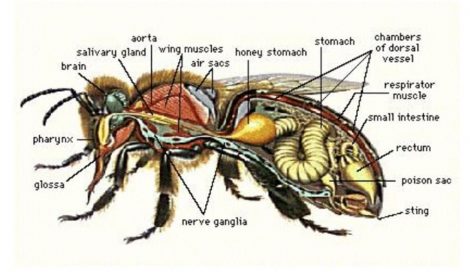- Wednesday, July 30, 2025
- Stay Connected
 Abraham Lincoln
If given the truth, the people can be depended upon to meet any national crisis...
Abraham Lincoln
If given the truth, the people can be depended upon to meet any national crisis...
 Guildford news...
for Guildford people, brought to you by Guildford reporters - Guildford's own news service
Guildford news...
for Guildford people, brought to you by Guildford reporters - Guildford's own news service
Beekeeper’s Notes January 2017 – Do Bees Poo In The Forest?
Published on: 1 Jan, 2017
Updated on: 2 Jan, 2017
Hugh Coakley keeps bees in Worplesdon. In the latest of his monthly notes, he talks about the toilet habits of bees during the winter.
Have you had that bloated feeling this Christmas? Too much good food and drink? Well, there is a cure for the suffering human.
You cut down on your food intake and use the ‘facilities’. Simple.
Not so for honey bees. They need to eat to keep going, they would otherwise quickly grind to a halt. But during the cold weather, it’s too cold to leave the hive and they can’t defecate when they want to because it would mean soiling in their own nest. A build up of faeces in the hive increases the chances of disease such as nosema – a fungus infection with diarrhoea as one of the symptoms. Not what’s wanted.
So they store it up for when it gets a bit warmer and they then rush out on their ‘cleansing flights’.

The intestine and rectum of a bee is quite a small overall percentage of the bee anatomy until the winter when it can enlarge enormously.
But in the meantime, they can hold on for weeks and store, I read, up to half of their body weight in faecal matter before they are forced to defecate. Half a body. That is quite a feat but not one that humans would be envious of.
Bees usually defecate on the wing. Little yellow spots on the car or on the washing? That could be bee poo but sometimes it’s hard to put names to faeces. There is a good You Tube recording of a bumblebee in full, slow motion action – click here to see it.
It is one of the few, perhaps the only bee product that is not used by man. Beekeepers collect and use the honey, wax, propolis, royal jelly and even pollen. But not the poo.
The further north the hive is located, the fewer days in the winter when cleansing flights are possible. The cleansing flights will be very short, a quick fly around, do the business and then back to the hive.
Do bees poo in the forest? Definitely! In the winter, it can be after a long wait though.















Harry Eve
January 3, 2017 at 1:30 pm
The team that produce QI should seek inspiration from Hugh Coakley’s articles. A recent edition did include something on Hippo poo – and let’s be thankful that bees behave differently!
It also covered the use of electrical charge and humming – by bees not Hippos (which charge but do not hum as far as I am aware). It showed a photo of a bumblebee and, fascinating though it was, left some questions unanswered.
I look forward to more “Beekeeper’s Notes” in the new year.